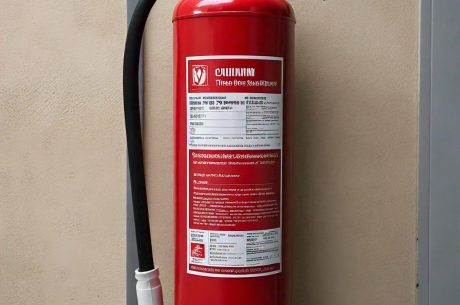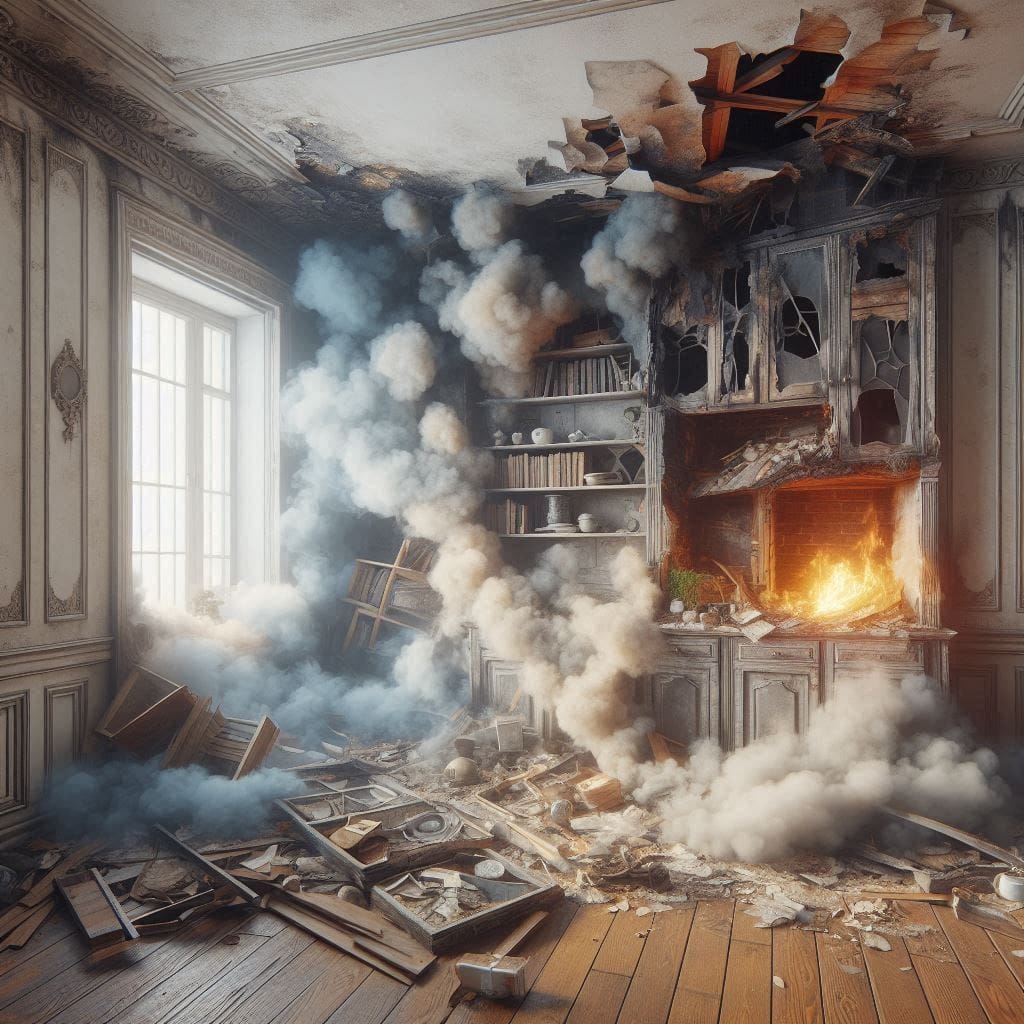Hey there, if you’ve landed here, chances are you’re dealing with the aftermath of a fire or helping someone who is. Fires are scary and disruptive, and one of the first questions that pops up is, “How long will it take to clean this up?”
We’ll dive straight into that, breaking it down step by step with real timelines based on what pros see every day. No hype, just facts to help you plan.

To kick things off, let’s talk about a real-life example that shows why understanding the timeline matters. Imagine Sarah, a single mom with two kids, whose kitchen caught fire from a forgotten stove. The flames were contained quickly, but smoke spread everywhere, and water from the firefighters soaked her floors. At first, she thought cleanup would be a weekend job, maybe scrub some walls and air it out. But days turned into weeks as she waited for assessments, dealt with insurance delays, and watched mold start creeping in from the dampness. The pain? Her family was displaced, living in a hotel, with kids missing school routines and her stressing over mounting costs. The lesson hit hard: Fires don’t just burn; the secondary damage like smoke and water can drag things out if you don’t act fast and hire experts. By understanding the process upfront, Sarah could have managed expectations, sped up claims, and gotten back home sooner. Stories like hers remind us that knowledge is your best tool in recovery.
Now, let’s get into the details.
What Happens Right After a Fire Breaks Out?
The immediate aftermath is chaotic, but pros jump in fast to stop things from getting worse. Firefighters put out the flames, but then the real work starts: securing your place and assessing the mess.
Typically, within the first 24-48 hours, a restoration team arrives for an emergency response. They board up windows, tarp the roof if needed, and check for hazards like unstable structures. This quick action prevents rain or vandals from adding to the damage.
If there’s water from hoses or sprinklers, and there usually is, they start extracting it to avoid mold. Skipping this can turn a fire problem into a mold nightmare, which adds weeks to the timeline.
Quick Summary:
- Emergency securing: 24-48 hours.
- Why it matters: Stops further damage like weather exposure or theft.
How Long Does the Initial Assessment Take?

Before any major cleanup, experts need to evaluate everything. This isn’t a quick glance, it’s a thorough inspection of structural integrity, smoke penetration, and hidden damage.
On average, this stage takes 1-7 days, depending on the fire’s size. For a small kitchen blaze, it might wrap up in a day or two. But for a whole-house fire, expect up to a week as they test air quality, check electrical systems, and inventory damaged items.
Insurance plays a big role here. You’ll file a claim, and an adjuster might visit, which can delay things if they’re backed up. Pro tip: Document everything with photos before pros arrive, it speeds up approvals.
Quick Summary:
- Duration: 1-7 days.
- Key activities: Damage evaluation, safety checks, insurance coordination.
- Tip: Start your claim immediately to avoid holdups.
What Are the Main Stages of Fire Damage Cleanup?
Fire cleanup isn’t one big job, it’s a series of steps, each building on the last. Here’s how it usually unfolds, with rough timelines for each.
- Water Removal and Drying (2-7 Days): If firefighters used water, this is priority one. Teams use pumps to suck out standing water, then dehumidifiers and fans to dry everything. Skipping this? Mold can start in 24-48 hours, extending your timeline by weeks.
- Debris and Soot Removal (3-7 Days): Next, they clear charred debris and scrub soot off surfaces. Soot is acidic and corrosive, so specialized cleaners are key. This includes walls, ceilings, and even HVAC ducts to stop smoke smells from lingering.
- Smoke Odor Elimination (1-2 Weeks): Smoke seeps into everything, fabrics, porous materials, you name it. Methods like ozone treatment or thermal fogging neutralize odors. For bad cases, it might involve replacing drywall or insulation.
- Content Cleaning and Inventory (1-2 Weeks): Your belongings get assessed. Salvageable items are cleaned off-site (think clothes, furniture), while ruined ones are documented for insurance. This can overlap with other steps.
- Structural Repairs (Weeks to Months): The heavy lifting, fixing beams, replacing wiring, rebuilding rooms. Minor fixes? A couple of weeks. Major rebuilds? 2-6 months or more if the foundation’s affected.
- Final Touches and Inspection (1-2 Weeks): Painting, flooring installs, and a final clean. Then, inspections ensure it’s safe to move back in.
The whole process ties together, so overlaps can shorten things, but bottlenecks like waiting for materials extend them.
Quick Summary:
- Total stages: 6 main ones, from water removal to final inspections.
- Overlaps possible: Efficient teams can handle multiple at once.
- Pro insight: Each stage prevents future issues, like corrosion from soot.
What Factors Influence the Fire Damage Cleanup Timeline?
No two fires are the same, so timelines vary wildly. Here are the big influencers:
- Severity of the Fire: Minor (one room, mostly smoke): 1-2 weeks. Moderate (multiple rooms, some structural): 3-6 weeks. Severe (whole house, major rebuild): 2-12 months. A grease fire leaves sticky residue that’s tough to clean, while electrical fires might damage wiring deeply.
- Size of the Property: A small apartment? Faster than a large home or commercial building, where more square footage means more work.
- Type of Materials Burned: Synthetics create toxic soot that requires special handling, adding days. Natural materials might clean up easier.
- Secondary Damage: Water from extinguishing can cause mold; smoke can corrode metals over time if not addressed quickly.
- Insurance and Permits: Delays in approvals or required inspections can add weeks. In busy areas, adjusters might take longer.
- Restoration Team’s Expertise: Pros with the right tools finish faster than DIY attempts, which often make things worse.
Understanding these helps set realistic expectations, like knowing a severe fire averages four months overall.
Quick Summary:
- Main factors: Severity, size, materials, secondary issues, bureaucracy.
- Range: Days for minor to a year for extreme.
- Lesson from pros: Quick action cuts time significantly.
How Long Does Fire Damage Cleanup Take on Average?
Based on what restoration companies report, the average full cleanup and restoration takes about four months. But that’s a ballpark, here’s a breakdown by damage level:
- Minor Damage: Limited to smoke and soot in one area. Timeline: 1-2 weeks. Example: A contained stove fire where structure’s intact.
- Moderate Damage: Fire affects a few rooms, with water and smoke issues. Timeline: 3-6 weeks. Think a living room blaze that spreads smoke house-wide.
- Severe Damage: Structural compromise, extensive rebuild needed. Timeline: 2-12 months. Like a roof-involved fire requiring permits and contractors.
These averages include everything from assessment to move-in. For smoke-only (no flames), it might be just 1-2 weeks focused on cleaning and deodorizing.
Remember Sarah’s story? Her moderate kitchen fire took five weeks because of water delays, had she known averages, she could’ve pushed insurance harder.
Quick Summary:
- Average overall: 4 months.
- By level: Minor (1-2 weeks), moderate (3-6 weeks), severe (2-12 months).
- Variability: Always depends on specifics, but pros can give estimates after assessment.
How Can You Speed Up the Fire Damage Cleanup Process?
You can’t rush perfection, but smart moves shave off time. Here’s what works:
Start by calling pros immediately, within hours if possible. They mitigate damage fast, like drying water before mold sets in.
File your insurance claim right away and provide detailed photos/docs. Choose a restoration company that handles insurance directly to avoid back-and-forth.
Avoid DIY: Scrubbing soot wrong spreads it, adding days. Let experts use industrial tools.
Stay communicative, regular check-ins with the team keep things on track. If permits are needed, pros often expedite them.
Finally, prioritize: Focus on essentials first, like making the space livable, then cosmetics.
These steps turned Sarah’s potential two-month ordeal into five weeks once she got organized.
Quick Summary:
- Key actions: Quick pro contact, fast claims, no DIY.
- Potential savings: Weeks off the timeline.
- Bonus: Prevents costlier secondary damage.
What Should You Expect During the Reconstruction Phase?

If the fire hit structure, reconstruction is the longest part. This is where carpenters, electricians, and plumbers rebuild.
Timelines here: Minor repairs (drywall, paint): 1-2 weeks. Full rebuilds (walls, roof): 1-6 months or more.
Expect noise, dust, and temporary displacement. Pros coordinate subs to minimize downtime, but material shortages (like post-disaster) can delay.
Insurance covers this, but verify your policy for “loss of use” to help with hotel stays.
In Sarah’s case, reconstruction was just flooring replacement, two weeks but it felt endless without updates.
Quick Summary:
- Duration: Weeks to months based on extent.
- Involves: Skilled trades for safe rebuilds.
- Prep: Budget for living elsewhere temporarily.
FAQs on Fire Damage Cleanup Timelines
Here are answers to common questions, straight and simple.
How long until I can return home after a fire? It depends on damage, minor: a week or two; severe: months. Pros aim for safety first.
Does smoke damage take longer to clean than fire damage? Often yes, because it infiltrates everywhere. Cleaning can take 1-2 weeks, but odors might need multiple treatments.
What if there’s water damage too? Adds 2-7 days for drying, plus mold checks. Act fast to avoid extensions.
Can I stay in the house during cleanup? Usually no, it’s unsafe due to hazards and equipment. Plan for alternatives.
How does insurance affect the timeline? Delays from approvals can add weeks. Work with experienced restorers who navigate this.
Is there a way to estimate my specific timeline? Yes, after assessment. Factors like fire type and home size give a personalized range.
What happens if cleanup takes longer than expected? Communicate with your team; adjustments might be needed. Insurance often covers extra costs.
Wrapping It Up: Key Takeaways on Fire Cleanup Timelines
Fires are tough, but knowing the timeline helps you regain control. On average, expect four months for full restoration, but it ranges from weeks for minor issues to a year for major ones. Focus on quick action, pros, and communication to shorten it.
Summary:
- Topic: Fire damage cleanup timelines.
- Average duration: 4 months (2 weeks to 12 months variable).
- Stages: Assessment (1-7 days), water drying (2-7 days), soot cleanup (3-7 days), repairs (weeks-months).
- Factors: Severity, size, secondary damage, insurance.
- Tips: Hire pros immediately, file claims fast.
- Story lesson: Understand process to manage pain of delays and learn proactive recovery.
If you’re in this situation, reach out to local restorers in Indiana like PuroClean, they’re there to help. Stay safe. Need Immediate Fire Damage Restoration in Indiana?
Call PuroClean Disaster Restoration now at (317) 467-4436 for fast, reliable service.
With over 15 years of experience in fire and smoke damage cleanup, odor removal, and full property restoration, our certified team has helped countless Indianapolis homeowners and businesses recover safely and restore their properties after devastating fires.
We’re proud to have earned 100+ five-star reviews on Google, a testament to our dedication to quality, safety, and customer satisfaction.
Read our verified customer reviews and see why Indianapolis trusts PuroClean for professional fire damage restoration.


 PuroClean Disaster Restoration
PuroClean Disaster Restoration